Steamy Java 2012 Blog
Pre-Tour Part 2
Updated 9 August 2012
Steamy Java 2012
DVD (Details Later) |
Do 'real steam' daytime field trains still exist in Java in 2012?
In 2010, real steam field trains only definitely existed at Sumberharjo in Central Java and these were nocturnal. At Olean and Asembagus in Eastern Java, daytime steam field trains could be arranged (for a fee) and we arranged this for our group at both mills. What was not clear, however, was whether these steam trains ever ran when the paying enthusiast wasn't there to pay for and watch them. Two years on, it's time to sneak up on Olean and Asembagus, on a day when no-one is likely to be paying, to see if real steam daytime field trains still exist in Java (and, for that matter, the world). The best test of real, working steam here would seem to be whether it operates when nobody has paid or can be anticipated to be willing to pay for the spectacle. Read on to see what I discovered on 15 July 2012. (And as I write this, even I don't know the answer.)
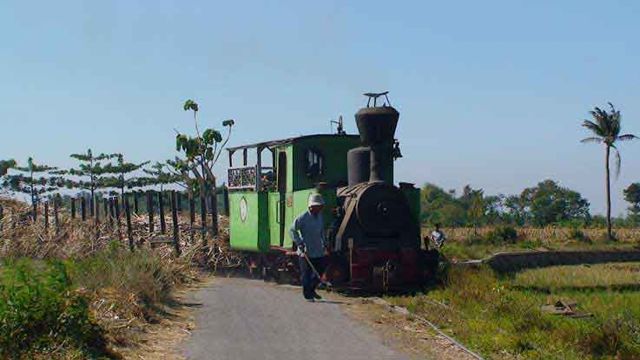
A real steam field train at Olean in 2008.
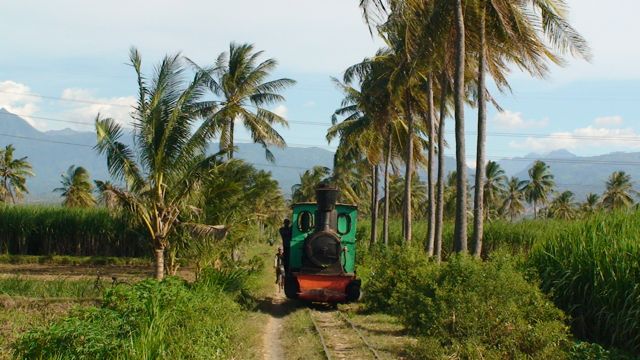
An arranged steam field train at Asembagus in 2010. The loco substituted for a diesel working (as far as we know) on the line out the back (south side) of the mill and we managed to get it to move off to the mill with a part-load just before sunset.
First, the result:
The Last Real Daytime Field Train in the World Challenge Cup
Asembagus 0 Olean 1
Read on for the details:
I'm still not sure if this qualifies as a glorious failure or a limited success. Although I like the concept of glorious failure, I am tending towards limited success.
Two trains of empties left Olean for the fields at around 7:30 and 8:00. One was bound for Dewet but the other one (the first) was going further to Gellung. Both were diesel hauled by locos No. 1 and No. 2.
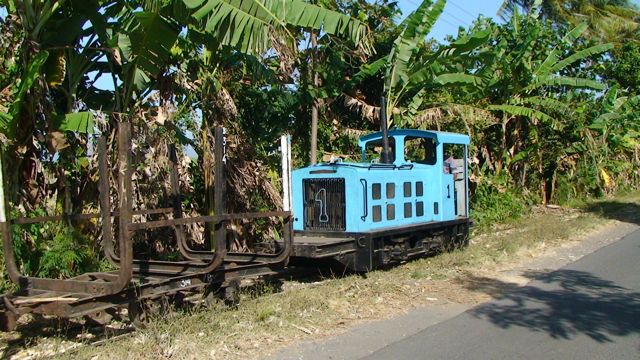
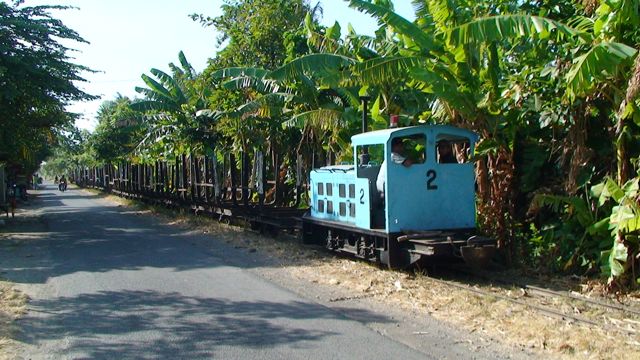
This was probably not surprising as we have often seen diesels take out the empties in recent years. However, security at the mill gate promised one steam and one diesel in the afternoon leaving at 1 pm so my mind was already made up to return to Olean for the afternoon. Meanwhile, we headed for Asembagus via the Panji field line to the north. From observation on this trip:
- Olean long field line north to Semiring is totally out of use with the rails tarred over at the road junctions on the major road. We didn't drive via Karang Malang.
- The Panji field line to the north is not in use and may also be finished
- the Panji line roadside to about 9 km from Situbondo is in use with a Japanese diesel on the empty lori
On arrival at Asembagus, we went to the north line and consulted the crossing keeper and security near the weigh bridge. They reported steam only used by special arrangement. Although not first hand, I am minded to believe this with steam theoretically on standby (but not in steam) and steamed only when a visiting group arranges this. This would be in line with the situation over the last few years. We saw a Japanese Keio diesel with rod drive leaving on a long train of empties to the north.
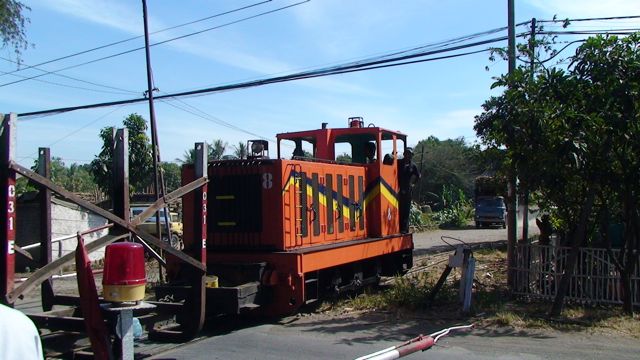
We then drove round to the lines to the south and found fields being harvested just south of this little bridge on which I photographed a chartered steam train in 2010. There was no loco around but no reason to suppose that steam rather than diesel brought out the empties.
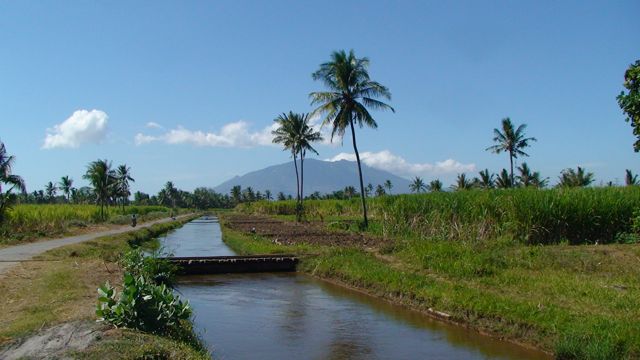
With the line blocked beyond, I didn't explore further and we headed back to Situbondo to the Rumah Makan Malang for lunch and a rest. We left at 12:30 and didn't have long to wait at the Olean back gate before the security guards came to tell us that the locos were about to exit. It was diesel No. 2 and steam No. 1.
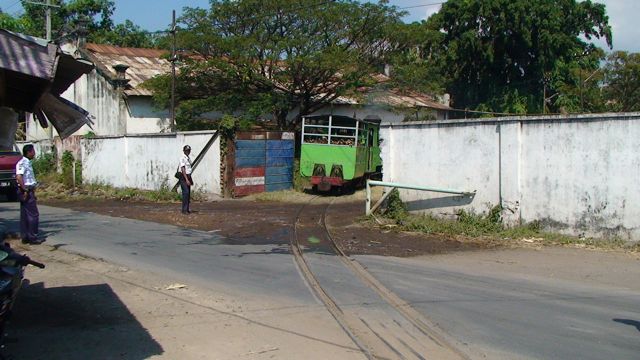
Real steam on a field train in 2012! With loads at Dewet and Gellung, we weren't sure which would do what but both continued to Gellung (the line towards Wringinanom at the junction at Dewet was being used to store track but cutting was taking place near Dewet on the way to Gellung).
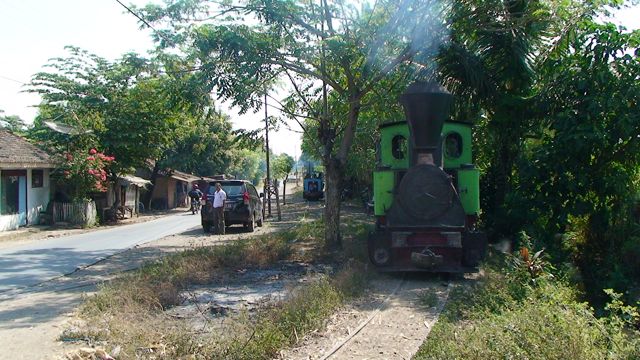
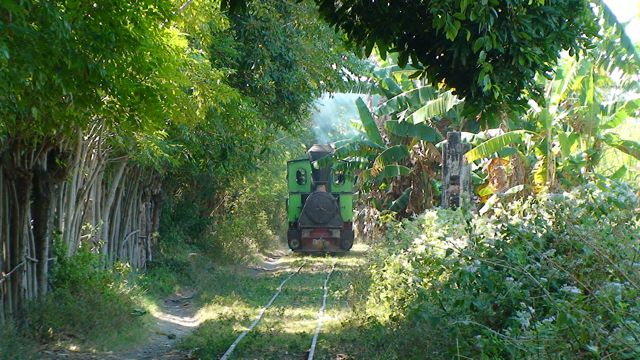
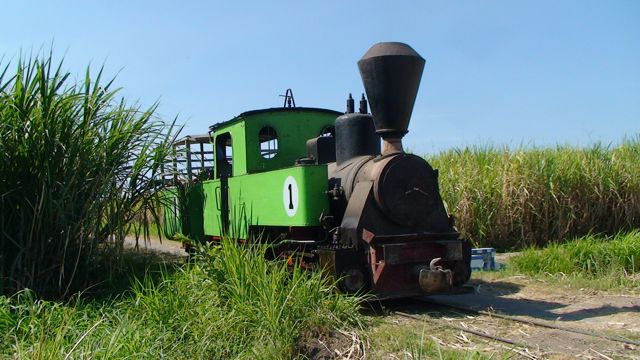
My guess of two separate trains at Gellung looked, initially, to be wrong as the diesel and then the steam loco backed onto the train to double head.
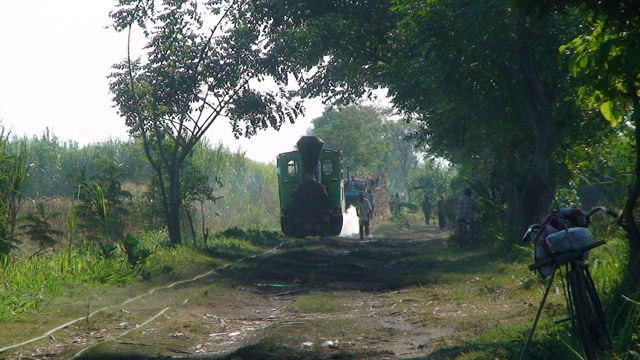
I was resigned to a real steam hauled field train with diesel assistance until the steam loco failed with injector problems and came back to the junction to let the diesel take half the train back to the mill. By now it was about 3:30.
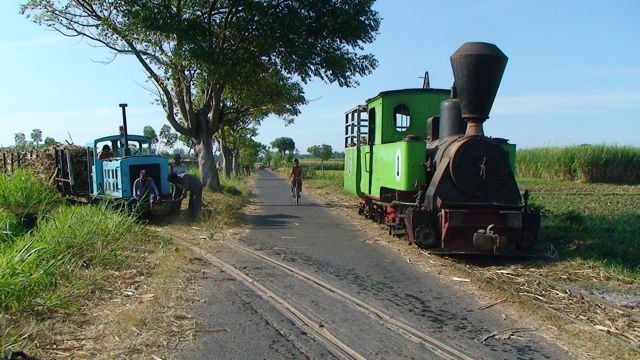

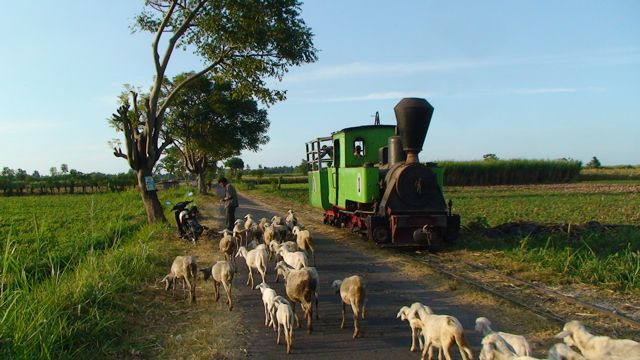
After lots of banging at the injector with no success, they finally got it working again when they had dropped the boiler pressure low enough (prior to dropping the fire?). It took quite a while to raise steam again but with injector still working, around 4:30 the loco dropped back onto the second half of the train.
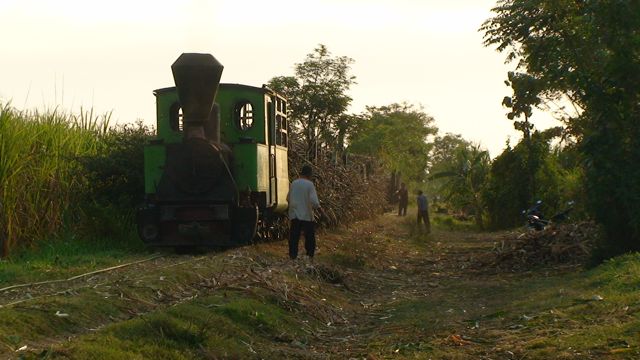
With the lori already coupled up, this could have been a swift departure but they seemed to leave a few wagons behind and it took time to get the train ready. Around 5 pm with the sun setting rapidly, I got what could be my last shots of a real steam hauled field train.
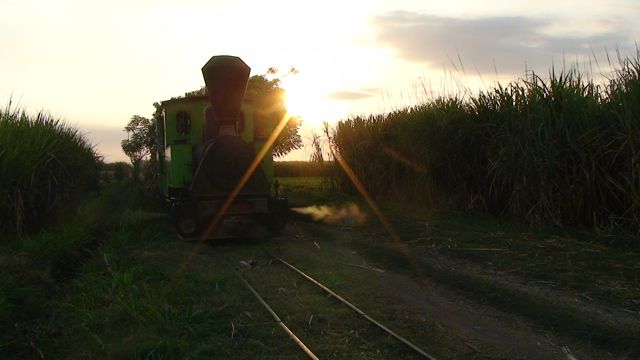
We drove ahead to a decent shot on a curve but had gone too far. The loco stopped for a blow up, the sun set and when we drove back to it, the crew were having injector problems again. With light fading, we left them to sort it out. A glorious failure or a limited success? Probably the latter. After all, this is real steam in 2012. What do you think?
And because none of the shots above clearly show Olean No. 1 underway on a loaded cane train, here is a digital still from my video.

You can contact me at john@linesiding.co.uk